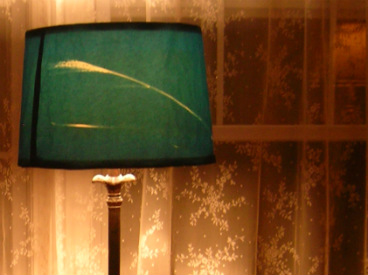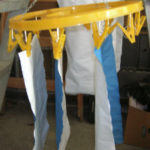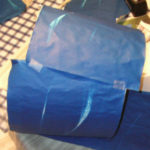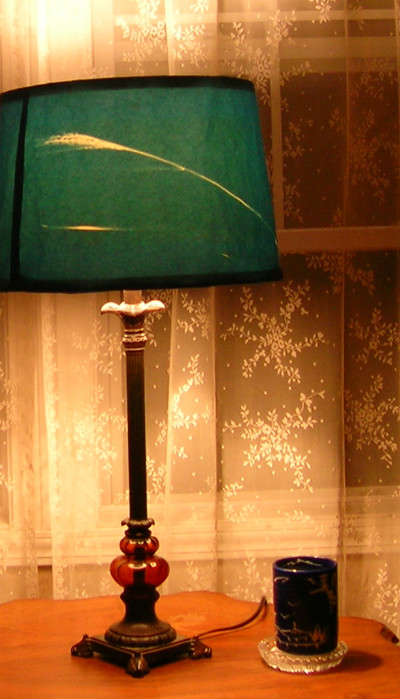Why Real Books Are Better
When Jeff Bezos unveiled the first Kindle in 2007, I ordered it straightaway. As a lifelong fetishist of the book, this didn’t quite feel right. But I withstood a surge of guilt about my small role in the metamorphosis of reading. In truth, the device was the invention of my dreams. The bookstore and the book, two of my favorite things, had merged into one piece of hardware. There was the promise that every volume in existence could be downloaded to the hand in less time than it took to yawn.
The device itself was wonky. It came with a keyboard that barely worked and an inelegant joystick that tested manual dexterity. Pages flipped at the wrong moment. The Kindle, however, was magic. I went on a spending spree — and unlike trips to the bookstore, the binges didn’t culminate in messy piles and never filled me with guilt about all the unread volumes staring at my desk. For a year, the Kindle traveled in the outside pocket of my tote and slept on my side table.
But if technology blinds us with its magic, the magic can wear off. By the time my third Kindle rolled in, I found myself returning to paper. My reversion wasn’t self-conscious. It happened slowly. I never really stopped collecting physical books. Because I worked for a magazine, review copies would arrive in the office with the postman. And there were old books that I couldn’t find on the Kindle, which I ordered from used-book sellers. The paper editions began to beckon. I didn’t think much about my transition back to paper. It just magnetically occurred.
I have no principled or scientific objections to screens. The internet is my home for most of the day. Twitter captures a huge share of my attention. I’m grateful for the rush of information, the microscopic way it is possible to follow politics and soccer and poetry and journalistic gossip. It’s strange, though, to look back and recall a day’s worth of reading. Of course, I could probably pose the question to my computer and find a precise record. But if I sit at my desk and try to list all the tweets and articles and posts that have crossed my transom, there are very few that I actually remember. Reading on the web is a frantic activity, compressed, haphazard, not always absorbed.
If the tech companies hope to absorb the totality of human existence into their corporate fold, then reading on paper is one of the few slivers of life that they can’t fully integrate.
The internet is an unending conversation; every argument is rebutted, shared, revised, and extended. It is a real-time extension of happenings in the world, exhilarating and exhausting.
I suppose my abandonment of the Kindle is a response to this exhaustion. It’s not that the Kindle is a terrible device. In fact, it’s downright placid compared to the horns and jackhammers blaring on social media. But after so many hours on the web, I crave escaping the screen, retreating to paper.
It was predicted that e-books would overtake the paper book, that they would become the totality of publishing. In 2010, the founder of MIT Media Lab, Nicholas Negroponte, was precise about the hour that paper would perish. “It’s happening in 5 years.” Well, doomsday has come and gone. Paper books have held their ground, and e-book sales have failed to accumulate at their predicted pace. Actually, they have plummeted. In 2015, e-book revenue dropped by 11 percent, while brick-and-mortar bookstore revenue increased by nearly 2 percent. My turn away from the Kindle wasn’t an idiosyncrasy, but part of a widespread tendency. My hunch is that a good portion of the reading public wants an escape from the intense flow of the internet; they want silent reading, private contemplation — and there’s a nagging sense that paper, and only paper, can induce such a state.
During the early Middle Ages, the book was quite literally a miracle. It was the means by which a priest conveyed the word of God. Literacy was sparse. In Europe, maybe 1 in 100 people could read. As the historian Steven Roger Fischer puts it, “to read” was to read aloud. Silent reading was a highly unusual practice. There are only a handful of recorded instances of it, worthy of note because they so shocked observers. Reading was perhaps the ultimate social activity. Storytellers read to the market, priests read to their congregations, lecturers read to university students, the literate read aloud to themselves. Medieval texts commonly asked audiences to “lend ears.”
Despite the relative intellectual bleakness of the era, literacy slowly crept beyond a small elite. The growth of commerce created the glimmerings of a new merchant class, along with professional texts that catered to its needs. Texts — once imposing blocks of letters, with one word jammed into the next, no white spaces separating them — were tamed by new syntactical rules.
There were increasingly breaks between words, punctuation even. Reading grew less strenuous, more accessible. It took several hundred years for the changes to fully register, for public reading to give way to silent reading. It was one of the most profound transformations in human history. Reading ceased to be a passive, collective experience. It became active and private. Silent reading changed thinking; it brought the individual to the fore. The act of private reading — in beds, in libraries — provided the space for heretical thought.
Fischer describes the change:
Active silent reading now prevailed, which demanded engagement. Hereby a reader became a doer, insofar as an author was now merely a guide who showed her or his silent and invisible audience a variety of paths. If early medieval listener-readers had almost always heard one chorus of voices singing Christian litany in harmonized unison, “humanist” scholars of the late Middle Ages were silently reading an entire world of voices, each singing a different song and in many tongues. … After generations of weaning from the oral thrall, countless readers could at last admit like Thomas à Kempis in The Imitation of Christ: “I have sought for happiness everywhere, but I have found it nowhere except in a little corner with a little book.”
There’s a strong impulse in our culture to run away from these little corners. We’re told that society’s winners will be the thinkers who network, collaborate, create, and strategize in concert with others. Our kids are taught to study in groups, to execute projects as teams. Our workplaces have been stripped of walls so that the organization functions as a unit. The big tech companies also propel us to join the crowd — they provide us with the trending topics, and their algorithms suggest that we read the same articles, tweets, and posts as the rest of the world.
We read in our little corners, our beds and tubs and dens, because we have a sense that these are the places where we can think best. I have spent my life searching for an alternative. I will read in the cafe and on the subway, making a diligent, wholehearted effort to focus the mind. But it never entirely works. My mind can’t shake its awareness of the humans in the room.
When we read deeply and with full commitment, we enter an almost trancelike state that mutes the outside world. The distance between words on the page and the scampering abstractions in our head collapses. As with the first generations of silent readers, heretical thoughts come and go; we’re stripped of intellectual inhibitions. That’s why we habitually retreat with our book to private spaces, where we don’t need to worry about social conventions, where the world can’t possibly read over our shoulder. That’s why we can’t jettison paper, even though the tech companies have tried their hardest to bring that about.
If the tech companies hope to absorb the totality of human existence into their corporate fold, then reading on paper is one of the few slivers of life that they can’t fully integrate. The tech companies will consider this an engineering challenge waiting to be solved. Everyone else should take regular refuge in the sanctuary of paper. It is our respite from the ever-encroaching system, a haven we should self-consciously occupy.
Surveillance on the internet is far different from the monitoring of the totalitarian state. The Soviet Union and its family of nations watched citizens to breed paranoia, to enforce the dogmas of the party, and ultimately to preserve a small elite’s undemocratic hold on power. We’re watched on the internet so that companies can more effectively sell us goods.
The fact that internet surveillance isn’t totalitarian, however, doesn’t mean that it does us no harm. We’re watched so that we can be manipulated. Some of this manipulation is welcome. We might revel in algorithmic recommendations of music, we’re pleased to be shown an advertisement for sneakers, we need computer help sifting through the mass of information. But there’s another way to describe the convenience of the machine: It is the surrender of free will — algorithms make choices for us. This isn’t so terrible, because our submission to manipulation is largely willing. Yet we rightly have a sense that we’re surrendering far more than we intend and that we’re being manipulated far more than we know.
Our digital future may be as glorious as advertised, or it could be a dystopian hell. But as citizens and readers, there’s good reason to throw sand in the machine. Only government policy can really dent the monopolies that increasingly control the world of ideas. But we can find moments when we willfully remove ourselves from the orbit of these companies and their ecosystems. It’s not a matter of dropping out, but of giving ourselves moments to ourselves.
Paper — in the form of books, magazines, and newspapers — is the place beyond the monopolies, where we don’t leave a data trail, where we are untracked. When we read words on paper, we’re removed from the notifications, pings, and other urgencies summoning us away from our thoughts. The page permits us, for a time in our day, to decouple from the machine, to tend to our human core.
We have deluded ourselves into caring more deeply about convenience and efficiency than about the things that last. Compared to the sustaining nourishment of the contemplative life and the deep commitment to text, many of the promiscuous pleasures of the web are vanishing. The contemplative life remains freely available to us through our choices — what we read and buy, how we commit to leisure and self-improvement, the passing over of empty temptation, our preservation of the quiet spaces, an intentional striving to become the masters of our mastery.
From World without Mind: The Existential Threat of Big Tech by Franklin Foer. Published by arrangement with Penguin Press, a member of Penguin Random House, LLC. Copyright © Franklin Foer, 2017.
This article is featured in the March/April 2019 issue of The Saturday Evening Post. Subscribe to the magazine for more art, inspiring stories, fiction, humor, and features from our archives.
Featured image: Shutterstock
Solar Print Craft

I fell in love with cyanotypes while on a kindergarten field trip. After hanging up our coats, they led us into a large room in the forefront of the John Michael Kohler Arts Center, stocked with tables, chairs, and enough art supplies to make Grayson Perry salivate.
We each were seated in front of three large sheets of blue paper. The art director explained that the sheets would turn white in the sun, and any part kept in shadow would turn blue.
Here’s a DIY project that will help light up your home.
Decoupage Solar Print Lampshade
Materials
- Light sensitive paper (purchased online or at a shop that sells art and education supplies)
- “Naturals” (leaves, grass, flowers)
- Lampshade
- Glue
- Decoupage glue
Tools
- Large, flat piece of cardboard (a sewing cutting board is great for this)
- Clear acrylic, plastic wrap, or glass pane (optional)
- Tub filled with water (large enough to submerge entire sheet of paper)
- Tape
- Smaller bucket for glue
- Paint brush
- Sunshine
Directions
- Lay cardboard down, then paper, then naturals on top. (Because ultraviolet light causes the reaction in the paper, do this in a dark room away from the sun.) If it’s a windy day, lay a piece of clear acrylic, plastic wrap, or glass on top to keep design from shifting.
- Set in sun. Exposed areas of paper will begin to fade from blue to white. Depending on how many clouds are in the sky, this process could be done in minutes or hours.
- When the areas of uncovered paper have turned completely white, submerge in water. For a deep Prussian blue, let paper soak for at least 5 minutes. Hang sheets to dry.
- After paper has completely dried, place between two sheets of parchment paper and iron. Then plot design layout on shade. (I taped—and re-taped—the sheets to the lampshade until I found an arrangement I liked.) Then, trim edges of paper to fit.
- Pour glue into bucket and dilute with water. (Equal parts water and glue.) Remove tape and use paintbrush to glue paper to shade. When dry, paint a layer of decoupage glue over entire surface of lampshade. Attach shade to lamp when dry.
Dreaming of a GREEN Christmas
December holidays bring extra packaging, millions of chopped down trees, and megawatts of flashing lights, adding 25 million tons of garbage to our landfills. Consumers can decrease these excretions by taking small measures to lower their carbon footprints. According to National Geographic News Online, if every family reused just two feet of holiday ribbon, the 38,000 miles of ribbon saved could tie a bow around the entire planet! The following tips suggest more ways of accomplishing a green holiday.
Recycle Wrapping Paper
Wrapping paper adds excitement to gift giving, but it also adds to tons of accumulated trash during the holidays. Consumers wrap an average of 20 gifts during the holidays. If just three of those gifts were wrapped in reused paper, the paper saved could cover 45,000 football fields!
Look for leftover paper from gifts you received last year, use old newspaper clippings or magazine adds to cover shoe boxes, or cut up brown paper bags as wrapping paper. If you can’t stand the do-it-yourself projects, opt for 100% recycled wrapping paper. You can find it online at FishLipsPaperDesigns.com or PaperMojo.com, and even in some organic foods markets.
Reuse Old Cards
We all love to hang those Christmas cards around the door frame or make collages on our refrigerators, but cards are known to stack up! Most of us throw them away after the holidays or stash them in a dark closet to take up space. The amount of cards sold in the U.S. each holiday season could fill a football field 10 stories high and consume up to 300,000 trees. Using the fronts of old Christmas cards as gift tags, new card stock (just glue on new pictures), or as a homemade postcard could save on paper where envelopes are no longer needed. If you can, opt for a paperless Christmas by calling family and friends on the special day or by looking for eco-friendly e-cards online.
Reduce Lights
Christmas tradition says the house with the most lights is the best. Well, not anymore! An average of 300 Christmas tree fires occur in the U.S. every year, leaving 14 fatalities. Timers can emit fires by controlling the amount of time lights stay on while you are not at home. Electricity also drains natural resources and reducing the size of displays can still offer an attractive light show and cut down on consumption!
Can’t live without your life-sized nativity scene in the front yard? Using LED lights can offer an alternative to downsizing, and they stay cool to the touch. If all conventional holiday lights were replaced with LED lighting, at least two billion kilowatt-hours of electricity could be saved in a month. That could power 200,000 homes for a year! LED lights can use up to 95 percent less energy and last much longer than traditional bulbs. Over a 30-day period, using 500 traditional lights could cost you $18 or more, where the same number of LED lights would only cost around 19 cents! Another huge incentive to switch, they are virtually indestructible, and when one bulb burns out, the others keep on shining.
Cut Down on Trees, Literally!
The U.S. Census Bureau observes that each year, roughly $410 million is spent in the U.S. for the purchase of real Christmas trees. Yet, fake trees are made out of nonrecyclable plastic. Fake trees may be used longer, but they are mostly manufactured overseas and emit toxins into the atmosphere when heated, and once they are shipped to landfills, they stay forever.
This season, opt for a real Christmas tree. These trees are grown on farms and are replaced by seedlings every year. As they grow, they help reduce carbon dioxide from the atmosphere and help support the farmers who produce them. Try to buy locally to reduce manufacturing and shipping emissions. You will love the smell, and you can even recycle the real tree once the holidays are over! Enter your zip code at Earth911.com to find nearby recycling posts for Christmas trees. The mulch could be used in gardens, playgrounds, and along riverbeds.
More: Picking the Perfect Christmas Tree
Paper or Plastic? How About Neither!
The Internet can be a great way to forego unneeded packaging, gas emissions, and overspending! Utilizing your options can help you save money on offers as you take the time to compare prices instead of indulging your impulses. Four in 10 consumers research purchases by Internet, but fewer than two percent buy online.
Buying online helps reduce several trips to several stores, overuse of paper or plastic bags, rewrapping, and spending more time and energy to mail gifts. As the song says, brown paper packages tied up with string are some of our favorite things! Shipping directly from the store to your recipient’s house will lack the pretty paper, but memories during the holidays are usually focused on time spent with family and friends. They won’t even notice the packaging; besides, it’s the thought that counts, right?
Experience the Gift of Giving
Instead of opting for physical objects, think of different activities that your recipient can enjoy without the use of packaging and bows! There are several choices: gift certificates, massages, tickets, etc. Check out Care2.com/greenliving/holidays/green-gifts for ideas. Just by using your imagination, your recipient will feel like you went out of your way to get to know them, and will appreciate the gift all the more!
Make It a Habit
It may seem difficult at first, making your holidays green, but be persistent. Once you take the challenge and are successful, you will reap those good feeling rewards. It will be much easier to continue through the holidays to follow—like second nature. And speaking of nature, she’ll be happy, too! Get out there and have yourself a green Christmas, and just like that old Mr. Grinch, you may be finding your heart growing a few sizes!



